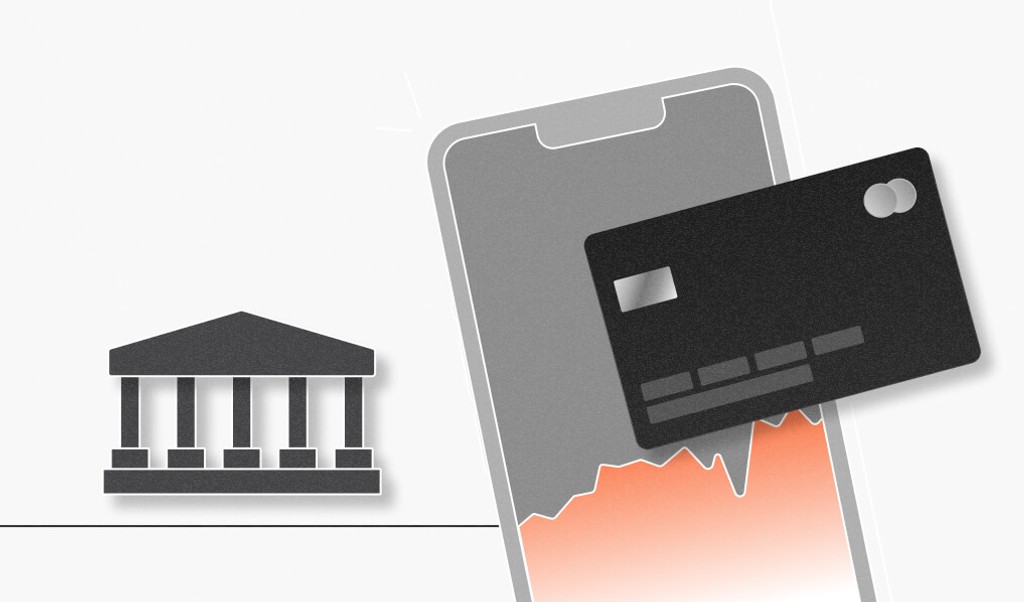
Summarize this article with
We often think of digital identity in terms of how we identify ourselves on a device or the Internet. For example, an email address and password stored in the Chrome browser form part of your digital identity and help you log in faster to a particular website.
However, as the number of devices, apps, and online accounts increase, our identities are along for the ride — and we need to know that our digital identities are being managed securely.
To prevent a breach (or reduce its potential damage if you are hit with one), companies need the right policies and processes in place to store and manage these digital identities efficiently.
What is a digital identity?
A digital identity is a broad collection of data and attributes that are unique to each user and device. Providers can use this data to identify individuals or devices, authenticate them, and authorize them to access a network, device, or service.
Users and devices form their digital identities as they engage and interact with the online world and leave behind digital “footprints.” Digital identity can include biometric data, social media profiles, browsing histories, personal identifiable information (PII), and more.
Given how much we rely on the Internet in our day-to-day lives, digital identities can get massive and complex. As a result, it’s become challenging for organizations that rely on digital identities to keep up with the increasing amount of data associated with each individual and device.
This has also led to more cybersecurity vulnerabilities for businesses — especially since fraudsters’ main goal is typically to uncover and exploit digital identities for financial gain.
Examples of digital identities
We tend to think of digital identities in terms of human users’ identities. But devices and digital services also need unique digital IDs to recognize and grant access to one another.
Digital identities break down into these three main categories:
- Human identity: These are attributes that a human user will use to gain access to a device or service — think passwords or biometrics.
- Machine identity: Machine identities are the digital credentials (e.g., IP addresses or TLS certificates) that authenticate and identify devices and applications in networked environments.
- Cloud identity: Essentially a blend of the other two types, a cloud identity can grant or restrict access to specific cloud resources, such as databases and applications.
Challenges of managing digital identities
People are always expanding their online presence through new jobs or clients and new apps and services that require them to create new accounts. Digital identities also expand as the solutions we rely on become more integrated.
For instance, we used to use our Gmail credentials only to log in to our email. But now, we can use that same info to “Sign in with Google” on numerous other platforms through single sign-on (SSO).
That said, let’s dive into the primary challenges organizations face when it comes to managing digital identities.
Security vulnerabilities
Security breaches and phishing attacks occur primarily because fraudsters want to get their hands on a company’s data — including the digital identities of its employees and customers.
According to the Identity Theft Resource Center, the number of data compromises in 2023 was 3,205 — an increase of 78% from the previous year and 72% from the former all-time high in 2021. IBM found that the average cost of a data breach is $4.45 million.
So, not only can a data breach ruin a company’s reputation, but it can also have severe financial ramifications.
Scalability and integration
Scaling digital identity management systems to meet growing demands is another challenge. Not only do organizations have to accommodate new users, but they also have to deal with the fact that each user’s unique digital identity is getting larger by the minute.
Established organizations also face the additional hurdle of integrating these systems with existing IT infrastructures. Without seamless implementation and integration, you run the risk of disrupting the UX and leaving holes in your security ecosystem that fraudsters can (and will) take advantage of.
Compliance and regulatory requirements
Even when organizations establish a strong security posture and figure out how to manage and scale digital identity management systems, they still have to tackle growing regulatory demands.
Compliance and regulatory requirements related to access control and safeguarding digital identities are increasing globally — especially for companies in the financial services industry.
For example, AML (Anti-Money Laundering) and KYC (Know Your Customer) compliance procedures have been amended to include specific requirements for keeping digital identities secure and private.
Best practices for effective digital identity management
There are several best practices for effective digital identity management that organizations can adopt to protect their customers, employees, and the company. The good news is that you might already have some of these in place, especially if you have robust security, data privacy, and risk management processes in place.
Robust identity and access management (IAM)
One of the most effective strategies when it comes to managing and protecting digital identities is to implement a strong identity and access management (IAM) solution.
An IAM platform can manage digital identities, grant access, and assign privileges to users based on certain attributes (e.g., job title, role, location, device). IAM platforms ensure that only authenticated and authorized entities can access critical information and resources within organizations.
Another key benefit of an IAM platform is its ability to handle the lifecycle management of digital identities. For instance, you can update identities with new credentials or deactivate or archive user accounts when they are no longer needed, such as off-boarded employees’ accounts.
Strong authentication methods
Stronger authentication methods serve as another defense of digital identities. Multi-factor authentication (MFA) and biometrics can stop would-be fraudsters in their tracks. And behavioral analytics platforms can spot anomalies and alert you to any suspicious user behavior that might signify an illegitimate user.
For example, behavioral analytics can see when regular users are signing in from new, unusual locations or alert you to surges in traffic from an uncommon region.
Regular audits and updates
Continuous monitoring and updating of digital identity systems is another best practice for reducing vulnerabilities. Most organizations have automation tools in place that already conduct updates, but human intervention from time to time is never a bad thing.
Regular audits can help you spot new and emerging cyber threats and stay compliant with new industry security standards. Some organizations also send regular questionnaires to employees and customers, asking about any recent experiences or observations related to signing in or using various services.
User education and awareness
Educating users about security hygiene and the importance of protecting against fraudulent digital identity verification goes a long way in strengthening your overall security posture.
Leverage your organization’s internal learning and development resources to create micro-learning modules for both employees and customers. These can cover the importance of safeguarding personal information, changing passwords frequently (and using strong passwords), implementing MFA, and other measures to protect digital identities.
Leveraging advanced technologies
Identity management systems often incorporate advanced technologies, such as blockchain, AI, and machine learning, to enhance their protection and prevention capabilities.
Since a blockchain cannot be hacked or altered, some companies have developed systems that allow users to create and store their digital identities on a blockchain. Because a blockchain is public, users can port this identity wherever needed for the identity verification process.
Data minimization and privacy
Another strategy to strengthen digital identity management is to use less personal data. Simply put, only collect the data that is absolutely necessary to provide services.
So, if a user’s Social Security number isn’t needed, don’t collect it. In addition to reducing the risk of data loss in the event of a breach, collecting less information is another way to respect users’ privacy.
As you implement these best practices, it’s important to keep the user experience (UX) in mind as well. Shoppers on e-commerce sites find it convenient when their credit cards are already stored and ready to use. Similarly, buyers of new smartphones like it when all of their apps, contacts, and preferences are automatically ported over to a new device.
Customers and employees understand the need for increased security, but they also expect a seamless, positive experience across all of their devices and services. This is why it’s important to strike a balance between security and UX.
How do you implement a secure digital identity management system?
E-commerce websites, SaaS platforms, and other online businesses can clearly benefit from a secure digital identity management system. Strong fraud prevention solutions, both at sign-up and continuously throughout the identity management lifecycle, can thwart potential cyberattacks seeking to access prized credit card information and PII.
A device intelligence tool that you can implement quickly and easily, like Fingerprint, can help shore up fraud prevention efforts. For example, Fingerprint’s browser fingerprinting gives users a permanent visitor identifier that persists across devices and browsers — and works even if they’re using a VPN or are in incognito mode.
Elevate your digital identity management with Fingerprint
Digital identities have become a trusted and convenient way for users to gain access to devices, networks, and services. But they’ve also led to growing security, scalability, and compliance issues.
We’ve covered several best practices that can help you better manage digital identities and permissions, including strong authentication methods and regular audits. But as digital identities grow more complex, it’s important to leverage the right tools and technologies for effective, scalable digital identity management.
As an advanced digital identity management solution, Fingerprint is your first line of defense against fraudsters seeking to compromise your organization’s data. Fingerprint’s Smart Signals work continuously to detect bots, analyze user behavior, and uncover suspicious devices, users, and networks — without disrupting the user experience.
Ready for a digital identity management solution that protects your data and your UX?
Contact us today for a personalized demo.
FAQ
A digital identity is the collection of data, attributes, and credentials that are associated with an individual, organization, or device. Devices and services use digital identities to recognize, authorize, and grant access to users and one another.
You can verify a digital identity using three methods:
- What people have (e.g., a government-issued ID)
- What people know (e.g., a password)
- Who people are (e.g., biometrics, such as a fingerprint or facial scan)
There are three distinct forms of digital identity: human identity, machine identity, and cloud identity.



